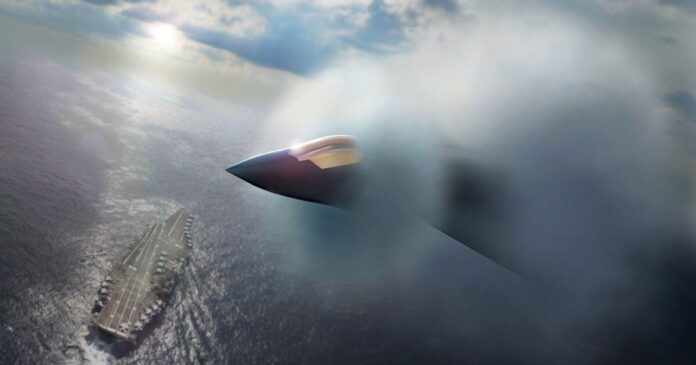In August, we saw Northrop Grumman unveil (slightly) its contender for the US Navy’s F/A-XX competition. Now, Boeing is stepping in with a misty rendering of its entry for the sixth-gen carrier-based fighter plane to replace the aged F/A-18 Super Hornet.
Six months ago, the F/A-XX Next Generation Air Dominance (NGAD) fighter competition looked as though it was on its last legs, stumbling toward the ash heap of failed programs. Where the US Air Force’s F-47 commanded a US$3-billion budget, the F/A-XX limped along on an anemic US$76 million.
With Lockheed Martin dropping out of the running in March 2025, the smart money was on the Navy competition soon dying from lack of funds, but Congress pushed against this, with the Senate Appropriations Committee approving an additional US$1.4 billion for the F/A-XX, and the House putting up US$972 million.
This second lease on life was bolstered by remarks by US Navy Vice Admiral Daniel Cheever saying to the press that the F/A-XX was “eagerly awaited.” Since the next step is to reduce the two competitors, Boeing and Northrop Grumman, to one, this optimism seems to have goaded the companies into ginning up public interest in their proposals.
Boeing
The Boeing rendering was released during the Tailhook Symposium and published by Aviation Week and, like the Northrop Grumman version, was deliberately lacking in detail, showing the F/A-XX blasting through the vapor cone caused by the plane going supersonic. However, the nose can be clearly seen and we can make a few deductions.
From previous renderings we know that the Boeing fighter is tailless and twin-engined, with an eye on stealth, though canards are visible on the forward section, suggesting that some stealth has been sacrificed for maneuverability. Designed for strike carrier operations, it has some similarities to the F-47, including a large cockpit canopy for a single pilot, though the forward radome is smaller.
Intended to replace the F/A-18 Super Hornet, which is nearing the end of its service life with what will be 9,000 hours in the air by the early 2030s, the F/A-XX differs from the Air Force program by its requirement to meet the peculiar needs of the Navy. Aside from being able to operate from carriers, the F/A-XX is pilot optional and is a multi-role fighter that can handle air combat, ground attack, surface warfare, and close air support missions. Since it’s a sixth-gen fighter, it also has advanced AI capabilities, allowing it to act as a command and control center for drone swarms as well as sharing huge bandwidths of sensor data with a global network.
The power plant for the F/A-XX is required to give it a 25% increase in range over existing fighters to meet threats in the Pacific theater. It can also provide the aircraft with extra power for new hypersonic missiles as well as directed energy weapons.
Though the Navy appears to be upbeat about the F/A-XX, there is no guarantee that it will survive the budget tug of war between Congress and the White House and concerns about the US defense industry’s ability to support two next-generation fighters. However, a final decision is expected in the next few weeks as to whether the program will continue.
Source: Boeing


